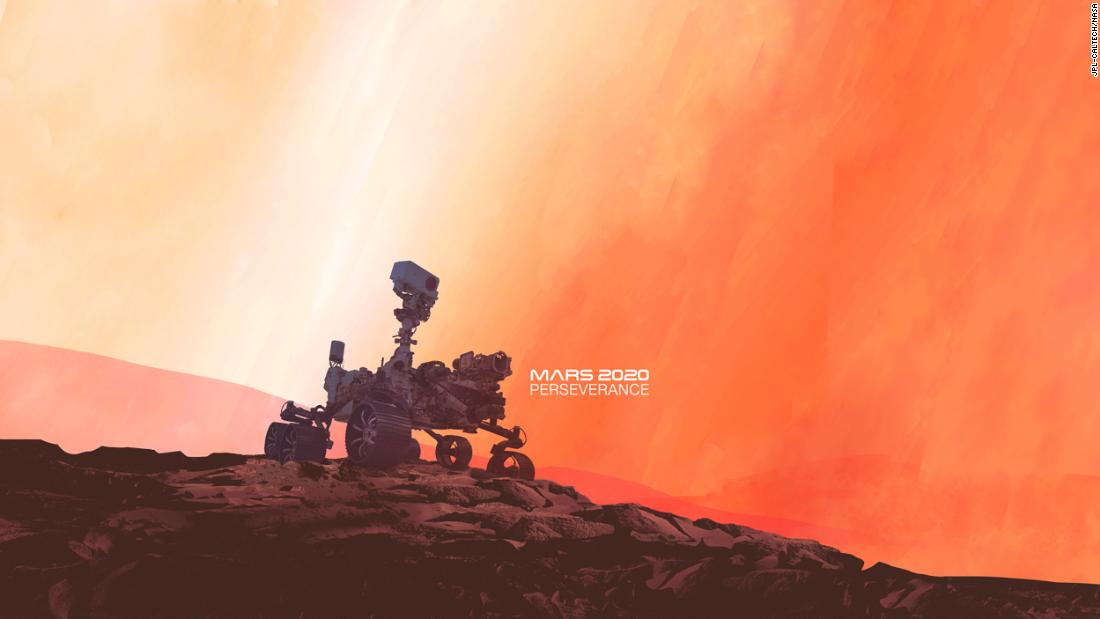
While 2020 may have been derailed and some scientific plans delayed due to the pandemic, 2021 still promises to be a year of science “as we’ve rarely seen it,” said Thomas Zurbuchen, associate administrator of NASA’s Science Mission Directorate.
Multiple missions will explore Mars, new telescopes will begin sightings, and there are plans to return humans to the Moon by 2024.
While the pandemic is likely to delay the launch and progress of some missions, others remain on track, especially those already in space. This is what else we can expect in 2021.
Discovering Mars in new ways
All three should arrive on Mars in February.
The Hope Probe will go into orbit around Mars, marking the UAE’s first time in orbit around the red planet. The probe will remain in orbit for a Martian year – equivalent to 687 days on Earth – to collect data about Mars’ atmosphere.
Tianwen-1, whose name means “Quest for Heavenly Truth”, is China’s first mission to Mars. The probe will orbit the planet before landing a rover on the surface, in the hope that it can gather important information about Mars’ soil, geological structure, environment, atmosphere, and signs of water.
Tianwen-1 contains an orbiter, deployable camera, lander and rover. Once the lander lands on Mars, it will extend a slope allowing the rover to roll to the surface. The orbiter can be used to relay signals from the rover to Earth, and the rover can send messages to Earth itself.
Once the rover has landed, Perseverance’s two-year mission begins.
The rover will also find a nice, flat surface to drop the Ingenuity helicopter, giving it a place to use as a helipad for its possible five test flights over a 30-day period. This occurs within the first 50 to 90 sols, or Martian days, of the mission.
Once Ingenuity has surfaced, Perseverance will drive to a remote safe place and use its cameras to view and record Ingenuity’s flight.
After those flights, Perseverance will begin searching for evidence of ancient life, studying the climate and geology of Mars, and collecting samples that will eventually be returned to Earth through planned future missions.
Exploring exoplanets
The new target launch date is October 31, 2021. The telescope will be launched from French Guiana. Previously scheduled for launch in March 2021, it was delayed due to the pandemic and technical challenges, according to the agency.
The telescope will answer questions about our solar system, study exoplanets in new ways, and look deeper into the universe than ever before.
It is equipped with a mirror that extends 6 meters and 4 inches – an enormous length that allows the mirror to capture more light from the objects it observes once the telescope is in space. The more light the mirror can receive, the more details the telescope can perceive.
It’s the largest mirror NASA has ever built, the agency said, but its size posed a unique problem. The mirror was so big it couldn’t fit in a rocket. So they designed the telescope as a series of moving parts that can be folded origami style and fit into a space of 5 meters to launch.
“Webb is designed to build on the incredible legacy of the Hubble and Spitzer space telescopes, observing the infrared universe and exploring every stage of cosmic history,” said Eric Smith, NASA Webb’s headquarters program scientist. the agency, in a statement.
“The observatory will detect light from the first generation of galaxies that formed in the early Universe after the Big Bang and study the atmospheres of nearby exoplanets for possible signs of habitability.”
Vera Rubins ‘first light’
It is the world’s largest digital camera, which can see a golf ball from 15 miles away and capture stunning 3200 megapixel images.
The observatory’s capabilities will make it possible to see faint objects 100 million times fainter than we can see with the naked eye. It is designed to map the Milky Way, investigate dark energy and dark matter, and investigate the solar system.
During the 10-year study, the camera is expected to image 20 billion galaxies.
Rubin, who died in 2016, once mentored fellow aspiring female astronomers and advocated for women in science. Rubin is considered one of the world’s most influential astronomers and provided some of the first evidence that dark matter – which encompasses much of the universe but cannot be seen – existed.
The camera is currently being assembled and the team estimated that the camera will be ready for testing by mid-2021 before being sent to Chile for installation.
Artemis: A New Space Generation
The NASA Artemis program, which aims to land the first woman and the next man on the moon in 2024, made great strides last year despite the pandemic. And 2021 is likely to bring more progress and milestones for the program.
While the first Artemis mission will be an unmanned flight test in November 2021, Artemis II will be a manned flight from the moon in August 2023.
Those missions pave the way for Artemis III – when astronauts return to the surface of the moon.
NASA’s Volatiles Investigating Polar Exploration Rover, or VIPER, will create the moon’s first water resource maps for future exploration of human space once it lands on the lunar surface in 2022.
By the end of the decade, an Artemis base camp could be set up on the south pole of the moon.




